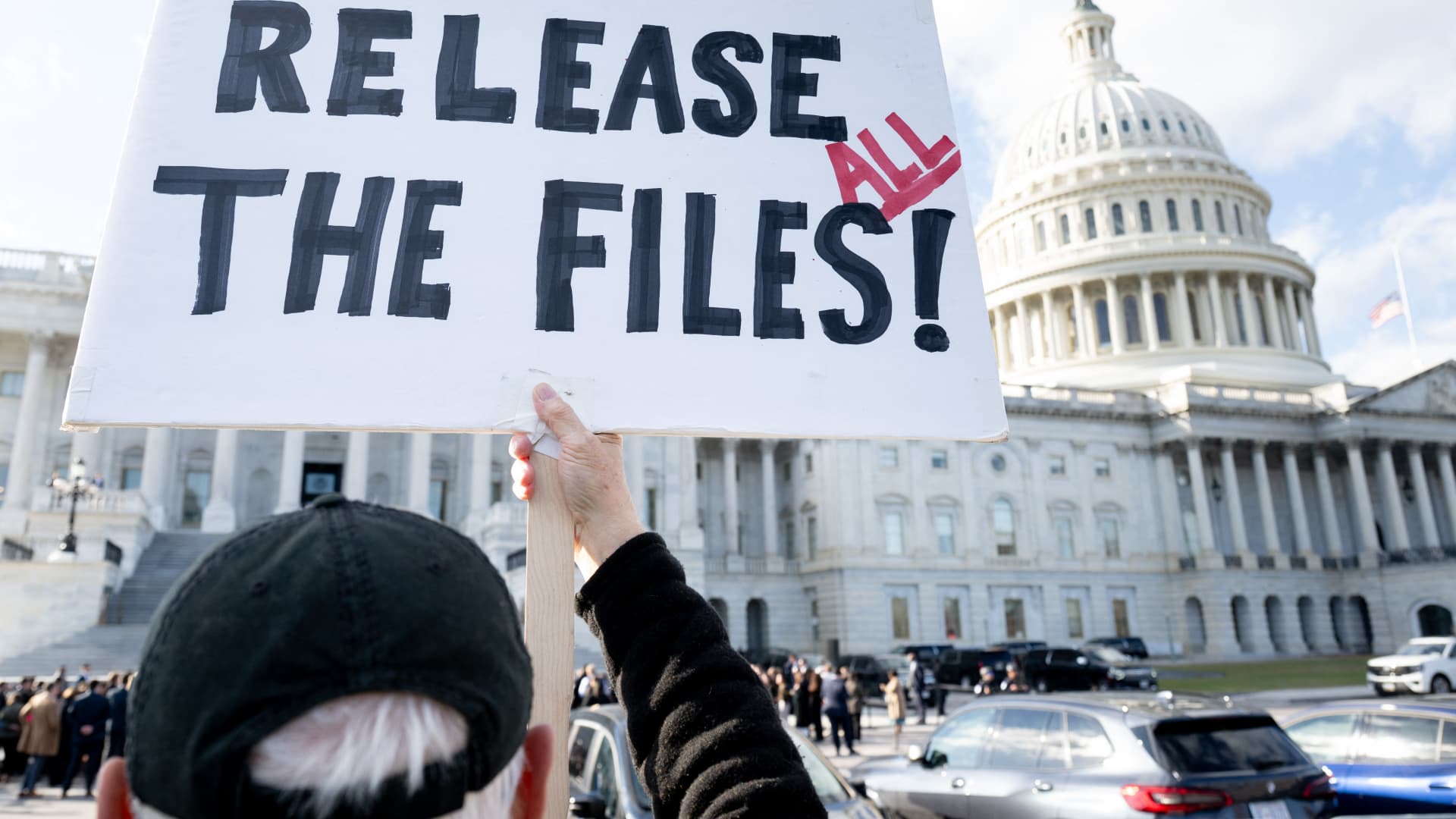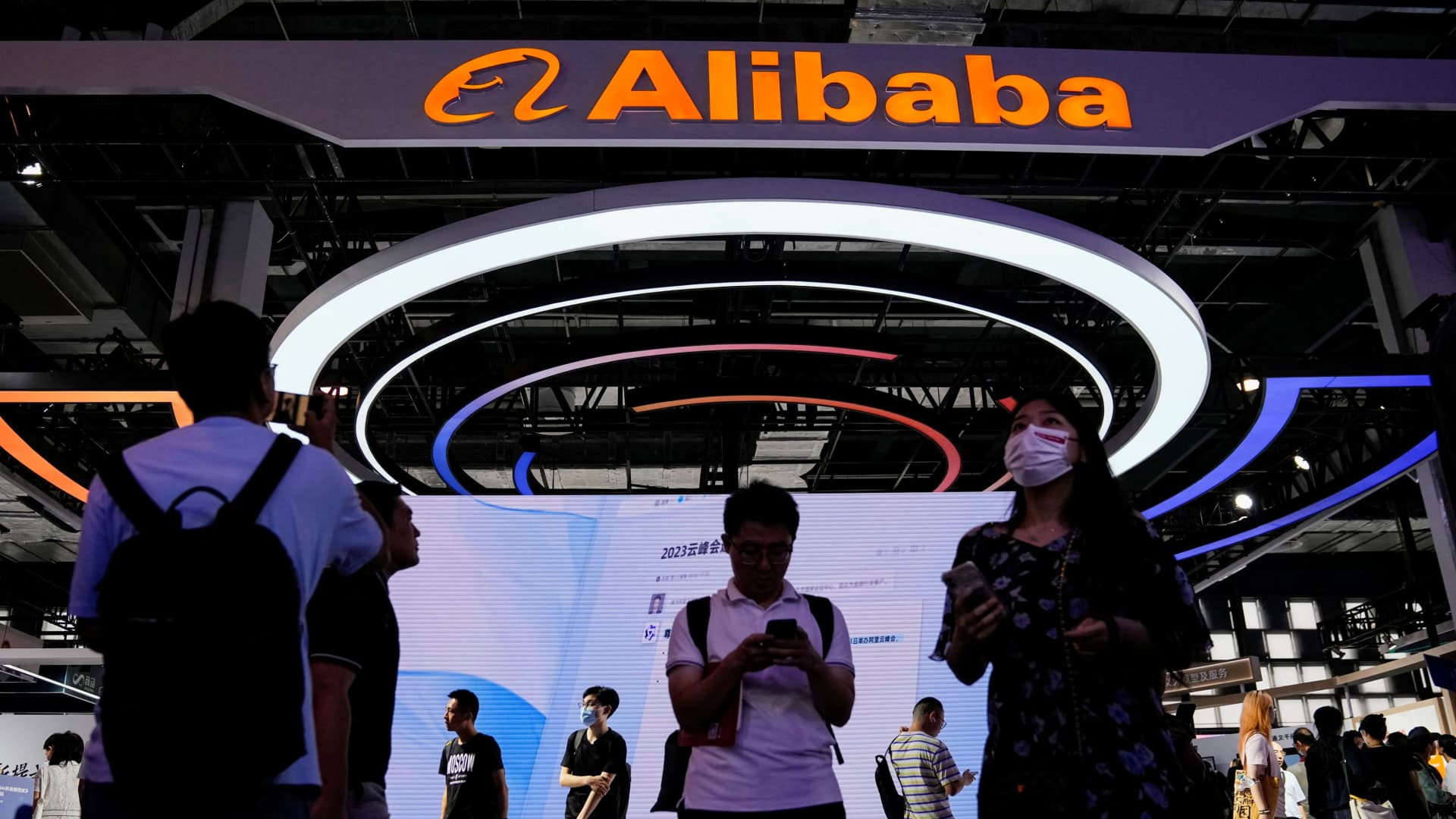The sun has set on Nvidia earnings week. Time to close up shop and return in three months when it reports again because nothing else matters, right? Not quite. Grabbing the spotlight from Nvidia in the week ahead is the U.S. jobs market — plus, there are a few noteworthy earnings reports within the broader artificial intelligence complex, including rival AI chipmaker and fellow Club holding Broadcom . We’d be remiss not to mention that Friday’s appeals court ruling striking down most of President Donald Trump’s “reciprocal” tariffs also figures to be a big topic of conversation this week, even though the duties are staying in effect until mid-October to give the administration time to appeal. In the holiday-shortened week of trading, here’s a closer look at what we’re watching for in the jobs data and on the earnings front. 1. Jobs, jobs, jobs: When Federal Reserve Chair Jerome Powell recently signaled the central bank could be ready to cut rates at its September policy meeting, he pointed to labor market conditions as justification. “Overall, while the labor market appears to be in balance, it is a curious kind of balance that results from a marked slowing in both the supply of and demand for workers. This unusual situation suggests that downside risks to employment are rising,” he said. And given the jobs market has cooled off, Powell said he sees a low likelihood of a so-called wage-price spiral of inflation, where workers successfully demand raises to offset any tariff-related price hikes. Against this backdrop, the question for investors is whether any of the four labor market reports due out this week do anything to cut against Powell’s assessment, or perhaps show additional softening that would further solidify expectations for a September cut and additional reductions into year-end. Indeed, Fed Governor Christopher Waller, a candidate to replace Powell next year as chair, suggested last week that an especially weak August jobs report could warrant a half-percentage point cut in September instead of the Fed’s traditional approach of moving in quarter-point increments. That August nonfarm payroll report is due out Friday morning, and it is the biggest of the week’s releases. After what we saw with the July jobs report, revisions to prior months are particularly important to watch alongside the August hiring total and unemployment rate. As of Friday, economists polled by Dow Jones expect the U.S. economy added 75,000 jobs last month, while unemployment rate is projected to creep up to 4.3% from 4.2% in July. Ahead of that, we’ll see the JOLTS report — officially called the Job Openings and Labor Turnover survey — on Wednesday morning. It measures tightness in the labor market, carrying implications for the aforementioned wage-price spiral, because when there are a lot more job openings than available workers, the upper hand in salary negotiations tilts toward the employees. Payroll processor ADP will release its monthly private employment report on Thursday, instead of its usual Wednesday. Expectations are for 75,000 job added in the ADP report, according to Dow Jones. That would be a deceleration from 104,000 in July. Also on Thursday, we’ll also get the latest look at weekly initial jobless claims, which have recently retreated from higher levels seen in June. The Dow Jones consensus, as of Friday, is for 231,000 first-time filings for unemployment insurance. 2. Earnings: A pair of Club stocks report in the coming days, led off by Salesforce on Wednesday night followed by Broadcom on Thursday evening. All estimates are from LSEG, unless otherwise noted. Don’t look now: Shares of beaten-up Salesforce have found a little momentum. The stock has advanced more than 10% since its lowest close of the year on Aug. 12, sharply outperforming a basket of software stocks that’s down almost 1% in that stretch. The dark cloud of “AI eating software” is still hanging over Salesforce and its enterprise software brethren, and the stock remains down more than 20% year to date even after its rebound. But longtime investors like us will take what we can get — signs of life are, well, signs of life. News that activist firm Starboard Value boosted its stake in the company during the second quarter seems to have sparked the resuscitation. That disclosure came in a securities filing the night of Aug. 14, and the next day shares added nearly 4%, in what became the first of four straight winning seasons. It’s had some down days mixed in, but the uptrend is intact. Now comes the test of earnings. The market will be keyed into the performance of Salesforce’s two AI-related products: Data Cloud and the newer Agentforce, which is the early innings of monetization as many customers run pilots before large-scale deployments. The hope is that these two products, especially Agentforce, can help Salesforce’s topline return to double-digits growth rates. The timing is the question. Current remaining performance obligation, or cRPO, is a key metric to gauge that future growth. Wall Street expects Salesforce’s cRPO to end the July quarter at $29.15 billion, implying 10% year over year growth. In a recent note to clients, analysts at Oppenheimer argued that Salesforce’s earnings report is unlikely to change anyone’s mind on the stock, as “AI messaging and estimates are unlikely to materially change post results and there remains execution risk” in the second half of its fiscal year. Still, they haven’t given up hope and neither have we, particularly ahead of its influential Dreamforce conference in October. “Agentforce and Data Cloud are investable themes, margin growth continues, and multiples are already discounting many risks,” Oppenheimer wrote. The consensus is for Salesforce to deliver quarterly revenue of $10.14 billion and $2.78 in adjusted earnings per share. Broadcom keeps the spotlight on the AI chip boom after Thursday’s close. It’s difficult to imagine that CEO Hock Tan will be any less upbeat on the long-term opportunity than Jensen Huang was on Nvidia’s conference call. Broadcom’s AI business falls in two camps: the custom chip design services and its networking products, which are used to stitch together large amounts of chips inside data centers so they communicate and transfer data smoothly. Google, Club name Meta and TikTok parent ByteDance are widely understood to be its three current customers, with Tan previously saying there are four more prospects in the pipeline. Any updates on those potential customers, along with general commentary on the market opportunity for custom chips, will be particularly noteworthy. Shares of Broadcom got hit Friday in sympathy with a disappointing quarter from custom-chip peer Marvell Technology , but it’s difficult to know whether those challenges extended to to Broadcom because in-house silicon projects are very customer-specific. Meanwhile, Broadcom’s broader chip portfolio servicing industries such as telecommunications and automotive has been a drag on growth for a while now. Citigroup expects that Broadcom will report above-consensus results “driven by continued AI strength.” However, the analysts continued, “With its non-AI semi business … down roughly 40% from the peak, we believe that business should recover and offset some gross margin dilution from the AI business.” Investors also want to see additional traction in Broadcom’s software business, led by virtualization software provider VMWare. Acquired by Broadcom in a blockbuster deal in late 2023, VMWare has benefited from transitioning customers from a traditional software license model to a subscription-based one and upselling them on an enhanced version of the product. JPMorgan told clients last week that it’s continuing to observe “strong momentum” in VMWare, with analysts also reiterating Broadcom as their top semiconductor pick. Wall Street expects Broadcom to report revenue of $15.83 billion and earnings per share of $1.65. Week ahead Monday, Sept. 1 U.S. market closed for Labor Day Tuesday, Sept. 2 ISM Manufacturing PMI at 10 a.m. ET Before the bell: Nio (NIO), Academy Sports and Outdoors (ASO), Signet (SIG) After the bell: Zscaler (ZS), HealthEquity (HQY) Wednesday, Sept. 3 Job Openings and Labor Turnover survey at 10 a.m. ET Factory orders at 10 a.m. ET Before the bell: Dollar Tree (DLTR), Macy’s (M), Campbell Soup (CPB) After the bell: Salesforce (CRM) , C3.ai (AI), American Eagle Outfitters (AEO), GitLab (GTLB), Hewlett Packard Enterprise (HPE), PagerDuty (PD) Thursday, Sept. 4 ADP private payroll report at 8:15 a.m. ET Initial jobless claims at 8:30 a.m. ET ISM Services PMI at 10 a.m. ET Before the bell: 1-800-Flowers (FLWS), Ciena (CIEN), Toro Company (TTC) After the bell: Broadcom (AVGO) , lululemon (lulu), DocuSign (DOCU), Samsara (IOT), UiPath (PATH) Friday, Sept. 5 August nonfarm payroll report at 8:30 a.m. ET Before the bell: ABM Industries (ABM) (Jim Cramer’s Charitable Trust is long CRM, AVGO, NVDA and META. See here for a full list of the stocks.) As a subscriber to the CNBC Investing Club with Jim Cramer, you will receive a trade alert before Jim makes a trade. Jim waits 45 minutes after sending a trade alert before buying or selling a stock in his charitable trust’s portfolio. If Jim has talked about a stock on CNBC TV, he waits 72 hours after issuing the trade alert before executing the trade. THE ABOVE INVESTING CLUB INFORMATION IS SUBJECT TO OUR TERMS AND CONDITIONS AND PRIVACY POLICY , TOGETHER WITH OUR DISCLAIMER . NO FIDUCIARY OBLIGATION OR DUTY EXISTS, OR IS CREATED, BY VIRTUE OF YOUR RECEIPT OF ANY INFORMATION PROVIDED IN CONNECTION WITH THE INVESTING CLUB. NO SPECIFIC OUTCOME OR PROFIT IS GUARANTEED.
Here are the 2 big things we’re watching in the stock market in this week












